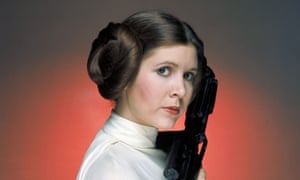Technology has given us many cool things – especially when
one considers what is possible with movies these days. Think Wakanda/Black Panther, Republic
City/Avatar, and Panem/Hunger Games, etc.
And now, in addition to creating worlds, the fine folks in production
studios are tasked with taking the visages of once real and living
people and making them do things or “act” in movies they never intended to act
in. There are different degrees of this
Celebrity Resurrection going on.
On the continuum starting with minimal doctoring would be
the new Star Wars: Episode 9 movie coming out. Carrie Fisher, who passed
away three years ago, will be reprising her character of Princess Leia without
ever having given her consent. In this situation, the studio is using extra
footage from Star Wars: The Rise of Skywalker and somehow convincingly folding
it into the new movie. Now, you may say
that is not CGI-ing the person, but I argue that it almost certainly will be
since there has got to be some finessing of Carrie’s image so as not to make
the whole thing look absolutely wonky.
Which brings me to my next example.
Appearing on the big screen two decades after his death,
British actor Peter Cushing’s likeness was used to recreate the role of Grand
Moff Tarkin in Star Wars: Rise of Skywalker. Here, the tech wizards had another actor do
the acting, then superimposed Peter’s head over said actor. I would imagine these days, in actor’s
contracts, there is some language addressing the degree to which studios can
utilize/transform/create/regurgitate the actor’s likeness. But you can bet
twenty years ago, when Peter signed his contract, there was no language
addressing this form of use.
Taking it one step further, I give you James Dean. Yes, I am giving you James Dean. Sixty-four years after his death. In a movie he never intended to be in using
technology that he never knew would be created. Look forward to Finding Jack,
a movie about Vietnam, in 2020.
CGI technology has fostered many a discussion around my
dinner table. The kids do not seem to be
troubled by the use of dead people re-animated at a writer’s and/or director’s
will. For me, it seems like a violation of privacy, a morphing of one’s memory, a distortion of a legacy. Nonetheless, I will admit this is not all
black and white. It has occurred
to me that Marilyn Monroe’s estate has kept the cash rolling in with endless
reproductions of every last photo they could find – and is it a big deal if
they photoshop a Santa hat on her or GAP jeans to sell something? Somehow that does not bother me quite as
much. It feels more like a derivative
work rather than a completely different work.
I am curious to know how other people feel on this topic?

No comments:
Post a Comment